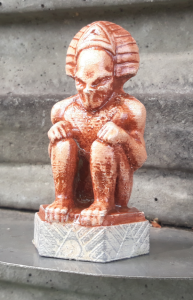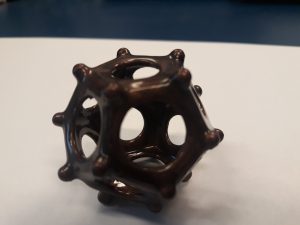Is any of various processes in which material is joined or solidified under computer control to create a three-dimensional object,[1] with material being added together (such as liquid molecules or powder grains being fused together). 3D printing is used in both rapid prototyping and additive manufacturing. Objects can be of almost any shape or geometry and typically are produced using digital model data from a 3D model or another electronic data source such as an Additive Manufacturing File (AMF) file (usually in sequential layers). There are many different technologies, like stereolithography (SLA) or fused deposit modeling (FDM)[2]. Thus, unlike material removed from a stock in the conventional machining process, 3D printing or Additive Manufacturing builds a three-dimensional object from a computer-aided design (CAD) model or AMF file, usually by successively adding material layer by layer.
The term “3D printing” originally referred to a process that deposits a binder material onto a powder bed with inkjet printer heads layer by layer. More recently, the term is being used in popular vernacular to encompass a wider variety of additive manufacturing techniques. United States and global technical standards use the official term additive manufacturing for this broader sense. [wikipedia]
My KOSSEL ANYCUBIC delta 3D printer
FreeCad is an open-source parametric 3D modeler made primarily to design real-life objects of any size. Parametric modeling allows you to easily modify your design by going back into your model history and changing its parameters.

Blender is the free and open source 3D creation suite. It supports the entirety of the 3D pipeline—modeling, rigging, animation, simulation, rendering, compositing and motion tracking, even video editing and game creation.

Gallery





